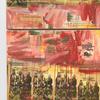JOHN MICHAEL KOHLER ARTS CENTER RESCHEDULES OPENING OF ART PRESERVE TO JUNE 26, 2021
- SHEBOYGAN, Wisconsin
- /
- July 06, 2020
New Collection Facility to Showcase Artist-Built Environments
The John Michael Kohler Arts Center has announced a new opening date for the Art Preserve, the world’s first museum devoted to artist-built environments. Due to delays caused by COVID-19, the Art Preserve, which was originally set to open its doors this August, is rescheduled to open June 26, 2021. The postponement allows for finalizing interior construction and installation of works of art.
The Art Preserve’s 56,000-square-foot, three-level building will provide exhibition space and visible storage for more than 25,000 works in the Arts Center’s world-renowned collection, which includes complete and partial environments by more than 30 vernacular, self-taught, and academically trained artists. As a new satellite campus, the Art Preserve will complement the John Michael Kohler Arts Center’s main location three miles away in downtown Sheboygan, a small city along Lake Michigan an hour north of Milwaukee.
The John Michael Kohler Arts Center is known for the exhibition, study, and preservation of the work of self-taught and contemporary artists. Considered a local treasure with an international presence, it holds the world’s largest collection of artist-built environments, a unique art form created by artists who often transform their homes and yards into multifaceted works of art. Works by more than 30 artists are included in the Arts Center collection.
Thirteen of the Art Preserve’s artists will be represented with major installations of their work, including Levi Fisher Ames, Emery Blagdon, Loy Bowlin, Eugene Von Bruenchenhein, Jesse Howard, Nek Chand, Annie Hooper, Mary Nohl, Dr. Charles Smith, Fred Smith, Lenore Tawney, Stella Waitzkin, and Ray Yoshida. Two of these artists were recently featured in exhibitions at the John Michael Kohler Arts Center: Dr. Charles Smith: Aurora; and Lenore Tawney: Mirror of the Universe.
“Despite the delay, excitement continues to build for the opening of the Art Preserve,” noted Sam Gappmayer, director, John Michael Kohler Arts Center. “Over 10 years in the planning, the Art Preserve serves as a contemporary setting for our distinctive and expansive collection and for the ongoing explorations and investigations into these unique sites and their creators. We’re proud to be an institutional steward of the works, and people are talking about Sheboygan being on the cusp of becoming an art destination.”
Prior to the June grand opening, on January 2, 2021, the Art Preserve will open its doors to allow visitors to watch the completion of the Dr. Smith, Tawney, and Bowlin collection areas. Arts Center staff will work in public view—a practice for which the building was designed. This “soft” opening offers the opportunity to showcase the experimental nature of the Art Preserve and to engage with the public about the fragile nature of the collection. In addition, the completed collection areas will be open for viewing, including those featuring work by Blagdon, Howard, and Chand.
“This invitation for public input will provide an opportunity for staff to interact with the visitors in the space and respond to their experiences. The Art Preserve is conceived and created as an open-ended series of responses to the needs of a unique collection; it seems a natural progression to include our visitors in that process,” said Amy Horst, associate director, John Michael Kohler Arts Center.
The Building
Embracing an aesthetic in harmony with the work it houses, the $40 million Art Preserve is located at 3636 Lower Falls Rd., Sheboygan, within an attractive natural setting on 38 acres on the city’s west side. The Denver-based firm Tres Birds served as planners and architects for the project.
The design incorporates materials favored by the creators of art environments into the building’s exterior façade and interior, and enhances interaction with the artwork while addressing exhibition and preservation concerns. The building is a primarily concrete structure, a material choice in keeping with the prevalence of concrete as a medium in the creation of many art environments.
A forest of soaring timbers, angled like the trees growing on the site, forms a dramatic entrance to the Art Preserve. These “timber shades” shield the collection from direct sunlight entering the building through the windows, while allowing views out to the trees, river, and meadow. The Art Preserve also incorporates other innovative structures and technologies that protect the artwork while allowing the beauty of the natural setting to permeate the space. Complementing the surrounding habitats, the design respects land conservancy initiatives related to adjacent acreage along the Sheboygan River.
The Artworks
The Art Preserve will emphasize Wisconsin’s rich history in the field of artist-built environments while also presenting national and international artists. The John Michael Kohler Arts Center possesses the largest collection available of many of the artists’ oeuvres. The Art Preserve will house a wide range of work that was made around the world, from Chandigarh, India, to rural Mississippi to the Hotel Chelsea in New York City. Previously, the 25,000 works in the collection could be seen only when on view at the John Michael Kohler Arts Center or on loan for exhibition at other institutions.
Among the installations will be:
- Emery Blagdon’s “Healing Machine” (incorporating bent wire, masking tape, sheet metal, aluminum foil, minerals, lights, and mechanical odds and ends), which he believed could channel the earth’s electricity and harness curative powers;
- a facsimile of Eugene Von Bruenchenhein’s pastel-colored Milwaukee home, inside of which is a selection of his photographs, paintings, sculptures, and other works presented based on historical photographs; with additional works that can be viewed in curated storage cabinets and on racks;
- a re-creation of Lenore Tawney’s loft studio environment, where the innovative fiber artist surrounded herself with only those things that enabled creative work; and
- a homage to Levi Fisher Ames’ background as a musician with a space that serves as a home for his elaborate wood carvings as well as a location for small performances.
“Whether walking through the installations or discovering the contents of curated storage shelves and racks, visitors will have unprecedented access to this fascinating art form,” added Gappmayer.
While safely housing the Arts Center’s expanding collection, the Art Preserve also addresses growing scholarly interest in these artists and includes an education area, library, study collection, and other spaces that will provide access to the collection for researchers, tour groups, and the public. Several of the artists’ archives, including Nohl, Von Bruenchenhein, and Howard, will be accessible to scholars and researchers seeking deeper understanding of the artists’ processes and inspirations.
A Low Carbon Footprint
The Art Preserve has been built with low embodied energy with the goal of achieving low operating energy. The building is built from 70 percent local river rock, which requires no manufacturing energy and uses very little transportation energy. Like a wine cellar, the Art Preserve is built into the side of a hill, tapping into the Earth’s constant underground temperature. This relationship helps the building maintain more consistent interior temperatures.
Tres Birds worked in close collaboration with the global engineering, design, and consulting firm Arup on innovative and sustainable design features including specialized heating and cooling systems, integrated lighting, acoustic, and MEP (mechanical, electric, plumbing) design solutions that provide energy savings, feature and preserve artwork, and enhance the patron experience.
The acoustic design includes specialized and strategically located sound-absorbing treatments to help mitigate noise propagation throughout the museum and promote intelligible speech from museum docents to enhance learning. In addition, the default state of the building is darkness, which is quite rare for a museum. The energy-saving lighting system utilizes motion-activated controls to light exhibition spaces when patrons are near the art and turn off when no one is nearby. All of these elements of the Art Preserve are interconnected to create a system with reduced fossil fuel usage.
About the John Michael Kohler Arts Center
Founded in 1967, the John Michael Kohler Arts Center is dedicated to making innovative arts programming accessible to a broad audience that ranges from artists to academics to families. Central to its mission is promoting understanding and appreciation of the work of self-taught and contemporary artists through original exhibitions, commissioned works of art, performing arts programs, community arts initiatives, and publications.
The Arts Center’s collections focus primarily on works by art-environment builders, self-taught and folk artists, and works created in the Arts/Industry residency program. Since the 1970s, the John Michael Kohler Arts Center has preserved, studied, and exhibited art environments. Today, with well over 25,000 individual works of art by 30 different creators of art environments in the collection, the Arts Center is the world’s leading center for research and presentation of this work.
Looking to the future, the Arts Center will continue to foster creative exchanges between an international community of artists and a diverse public at both its New York Avenue and Lower Falls Road locations. The John Michael Kohler Arts Center is supported by corporate and foundation donors, government grants, and its many members. The Arts Center is not an entity of Kohler Co. or its subsidiaries.
The John Michael Kohler Arts Center is located at 608 New York Avenue, Sheboygan, WI. Admission is always free. For information, call 920-458-6144, or visit jmkac.org, Facebook, Twitter, or Instagram.
The Art Preserve is located at 3636 Lower Falls Road, Sheboygan, WI 53081. For more information visit jmkac.org/artpreserve
About Tres Birds
Tres Birds is a full-service planning, architecture and general contracting firm based in Denver, Colorado. Founded in 2000, Tres Birds creates dynamic designs for a better world―building sustainable communities, respecting nature, and sparking innovation. Working across the disciplines of architecture, art, engineering, and science, Tres Birds’ transformative projects get to the core of what matters―beauty, timelessness and consideration of biodiversity. Without a need to proclaim a signature style, Tres Birds is free to create the best outcomes.
The Tres Birds team is made up of progressive systems thinkers and makers who create healthy and efficient spaces that reduce carbon footprints and bring joy to their inhabitants. With a belief that less is more, Tres Birds often repurposes humble regional materials leading to sustainable and affordable results. Innovative thinking results in singular solutions for multiple challenges. Projects range from mixed-use developments and corporate headquarters to net-zero energy homes, museums and city parks. Each one is designed to bring wellbeing to the people who spend time there and the surrounding ecosystem. www.tresbirds.com

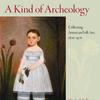


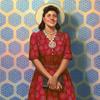
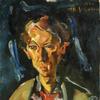
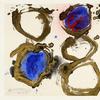







10100x100_c.jpg)

